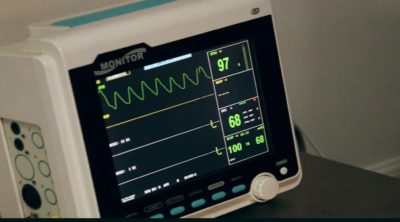
Ocular myasthenia gravis is a type of autoimmune disease, that weakens the muscles of the eye and the eyelids, which may result in blurred or double vision and drooping of the eyelids.
Ocular myasthenia gravis is a type of myasthenia gravis (MG), that affects the eye muscles. Myasthenia gravis (MG) is an autoimmune neuromuscular disease, where the immune system produces some antibodies, that disrupt the communication between the muscle and nerves, at the neuromuscular junction. This results in muscle weakness and fatigue. When this unusual condition affects the eye muscles, it is known as ocular myasthenia gravis.
However, ocular problems caused by the weakness of eye muscles, can be the initial symptoms of generalized MG as well. About 90% of patients with MG develop weakness of the eyelid and eye muscles. On the other hand, a significant number of patients who have only ocular problems in the first year, will eventually develop generalized MG. The term myasthenia gravis is said to have originated from Latin and Greek words meaning ‘grave muscle weakness’.
| What Causes Ocular MG? |
| Normally, the muscles of the body contract, when the central nervous system generates and transmits electrical signals to the muscle fibers, by means of nerve impulses, which are converted to chemical message at the neuromuscular junction (place where nerves connect with the muscles via synapses). At neuromuscular junctions, the nerve endings release a chemical, known as acetylcholine (ACh). Acetylcholine is a neurotransmitter, which binds to the corresponding ACh receptors, present in the muscle fibers.
In case of ocular, as well as generalized MG, the immune system produces antibodies that block the ACh receptors and thus, prevent ACh from binding to these receptors. This in turn, disrupts the communication between the nervous system and muscles. It is not clearly understood why immune system produces antibodies to attack the ACh receptors. Researches are going on in this area, to unearth the reason behind such an immune response. However, it has been observed that factors, like exposure to bright sunlight, pregnancy, surgery, hot weather, stress, viral respiratory infections, and menstruation, may exacerbate the symptoms of ocular and generalized MG in some patients. |
| Symptoms of Ocular MG |
The main characteristic feature of both ocular and generalized MG is muscle weakness, that usually increases during the periods of activity and improves after taking rest. The symptoms that are more commonly observed in ocular MG are:
|
| Why are the Eye Muscles Frequently Involved in MG? |
| The reason behind the frequent involvement of eye muscles in MG is not well understood, though several hypotheses have been put forward. One hypothesis is that, weakness of the eye and eyelid muscles, is more apparent than the weakness in other muscles, such as the muscles of the limbs. Even a slight weakness in the eye and eyelid muscles, can result in misalignment of the eyes and double vision, while minor weakness in the limbs can be well-tolerated by the patients. Another hypothesis attributes the susceptibility of extraocular muscles in MG, to their structural difference. The eye muscles are smaller and they contract rapidly, which can predispose them to fatigue in MG. Moreover, it is suspected that, the eye and eyelid muscles may have fewer ACh receptors than the limb muscles. Yet another hypothesis is that, eye and eyelid muscles may respond differently to an immune attack, which can make them more vulnerable in autoimmune conditions. |
| Diagnosis and Treatment |
| The diagnosis usually begins with the study of patients’ history and the results of various examinations, mainly neurological examinations. Eyelids and eye muscles are also examined to detect the disease. Since it is an autoimmune disease, blood test is carried out to determine the presence of antibodies, that block the ACh receptors. Some other tests employed for the diagnosis of this disease are, single-fiber electromyography (SFEMG) and tensilon test. Tensilon test is an important test for confirming the disease, in which edrophonium is intravenously administered into the body, that can temporarily prevent the breakdown of ACh. If the patient is suffering from ocular MG, then there will be a marked reduction in the weakness of the eye muscles. Patients of MG, in general, are treated with anticholinesterase agents, such as Mestinon. For the patients suffering from double vision, eye patches, frosted lens, occluding contact lens, can be used, while ptosis tape is used for the ptosis patients. Crutches can also be placed on the eyeglasses of patients with ptosis. Sometimes, plastic prism can be attached to the eyeglasses, to resolve diplopia in ocular MG patients. In severe cases, immunosuppressive therapy may be considered. Patients of ocular and generalized MG are usually examined for the presence of thymomas (tumors of the thymus gland). If a thymoma is present, then it may require surgical removal. |
Weakness of the eye muscles and the symptoms associated with it, can be present in many other disorders, which can make it difficult to detect ocular myasthenia gravis. Therefore, any kind of vision problem, drooping of the eyelids, and trouble in closing and opening the eyelids, should be medically evaluated to ensure proper diagnosis and treatment.
Disclaimer: This article is for informative purposes only, and should not be treated as a substitute for professional medical advice.


